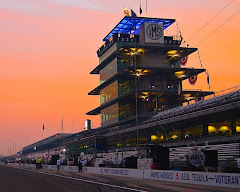
Courtesy of Ken Homa, Georgetown University McDonough School of Business

Note that I do not include Tony Cotman in my analysis of IRL management because his responsibilities and authority are unclear to me.
- Pursuing arbitraged sponsorships that are intended to preserve the status quo despite the absence of demonstrated demand for the racing product.
- Establishing a race promotion contract with the publicly subsidized promoter of the undersized Barber Motorsports Park.
- Attempting to convince the City of Baltimore and the State of Maryland to subsidize a 2011 street race.
- Renewing a Honda engine and sponsorship arrangement that forces IndyCar teams to work with a rent-seeking supplier that is bleeding the IndyCar enterprise of much needed cash.
- Attempting to secure robust financing in exchange for a non-strategic race in Brazil.
- Seeking corporate dollars rather than consumer acceptance.
- Allowing powerful teams disproportionate influence with regard to selection of the new specs that are to be introduced in 2012.
- Failing to realign IndyCar TEAM so that it might improve the IndyCar product to achieve market acceptance.
- Chasing short-term pay days rather than establishing a sustainable cost structure that might lead to a more salable product and increased U.S. television ratings.
- Choosing to believe that it is incapable of competing with the dominant market leader.
- Turning its back to virtually all empirical data and pursuing a market position that has very limited upside, at best.
- Attempting to force a demonstrably unwanted product on the market, rather than recognizing and adapting to consumer demand.
Toward a Market Competitive IndyCar Series: Fell the House of France!
I would like to see an IRL management team that might reside at the bottom of Professor Homa's list and the top of the U.S. motorsports market. The IndyCar Series needs Revolutionary managers! However, leadership of that type will require expertise in fields that have little or nothing to do with either sales or racing operations. I believe in all sincerity that the future of the great Indianapolis 500 Mile Race depends on it.
Acquiring such a management team is in the interest of the Indianapolis Motor Speedway Board of Directors. Now that the 2009 IndyCar Series season is nearly complete, I hope in earnest that the Board will commence with the job at once.
Roggespierre






